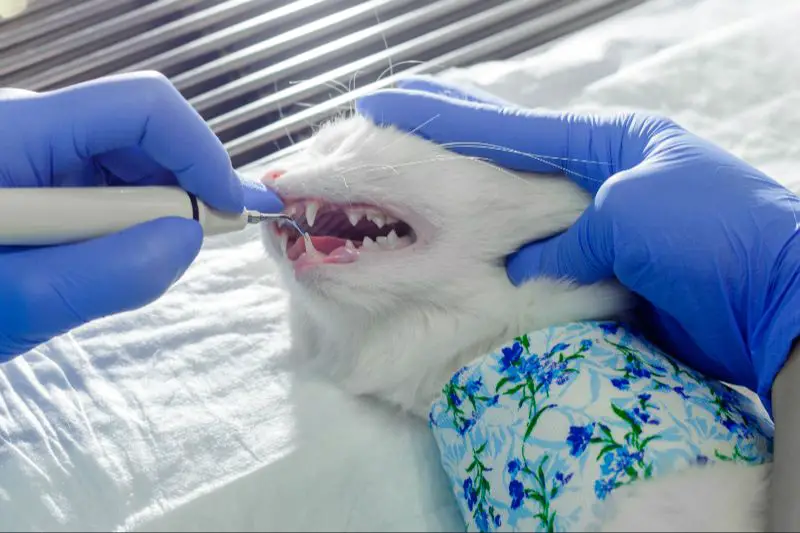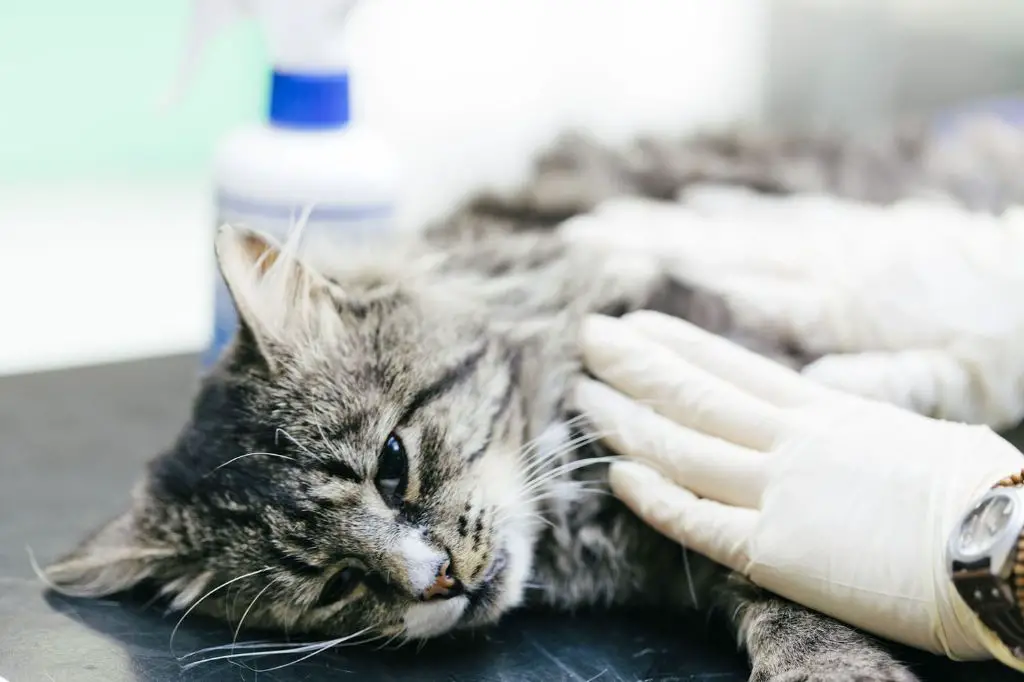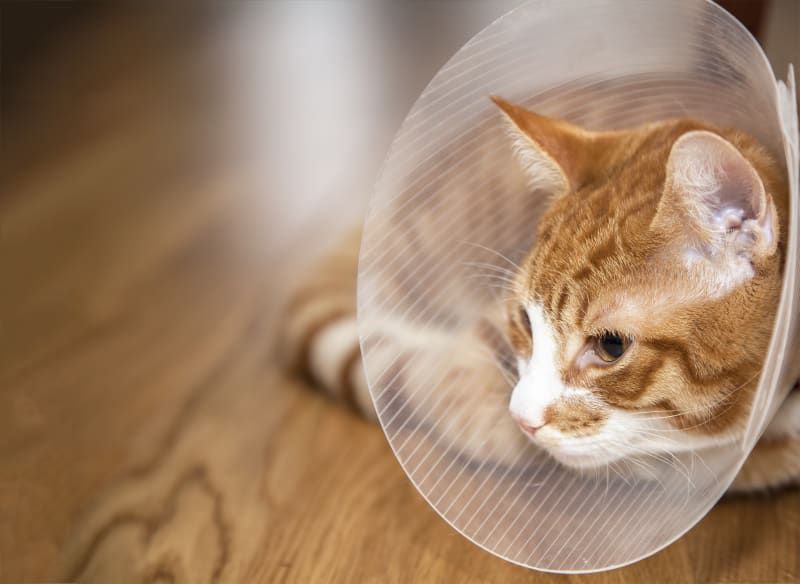Cats often require anesthesia for medical procedures like surgeries, dental cleanings, or imaging tests. While anesthesia allows veterinarians to safely examine and treat cats, it does come with potential side effects. One of the most common side effects veterinarians see after feline anesthesia is vomiting.
Vomiting can be alarming and concerning for cat owners after their pet undergoes anesthesia. However, there are steps both veterinarians and owners can take to reduce the risk of vomiting. Understanding the causes, preventing nausea, and properly caring for cats after anesthesia can lead to an easier recovery.
This article will explore the reasons cats may vomit after anesthesia, provide tips to reduce nausea, and discuss proper aftercare to get your cat back on their paws as quickly as possible.
Reasons for Anesthesia in Cats
Cats are commonly given anesthesia to keep them safe and pain-free during medical procedures, surgery, and dental cleanings. General anesthesia induces a temporary loss of consciousness so that cats do not experience pain or remember the procedure. Some of the most common reasons cats may require anesthesia include:

Surgery – Any invasive surgical procedure requires the use of anesthesia. This includes spaying/neutering, mass removals, orthopedic surgery, etc. Anesthesia ensures the cat remains still and pain-free during the operation.
Dental cleanings – In order to properly clean a cat’s teeth above and below the gumline, anesthesia is necessary. The anesthesia allows full access to the mouth without the risk of biting.
X-rays and scans – Diagnostic imaging procedures like X-rays, CT scans, and MRIs require the pet to stay very still. Anesthesia is used to keep the cat immobilized and safe.
Blood draws – Some anxious or aggressive cats need sedation or anesthesia for routine blood draws to avoid bites and scratches.
Grooming – Overgrown nails and severe matting are painful to remove when a cat is awake and mobile. Light sedation allows safe grooming.
Medical exams – Skittish cats often require sedation for physical exams to avoid bites and scratches while being handled.
Types of Anesthesia Used in Cats
There are several types of anesthesia that can be used on cats:
Injectable Anesthetics
Injectable anesthetics like ketamine, telazol, and propofol are commonly used to induce anesthesia in cats. They are injected intravenously or intramuscularly and provide short but deep sedation to allow administration of inhaled anesthetics. Ketamine is one of the most commonly used injectable anesthetics in cats according to VCA Animal Hospitals.
Inhalant Anesthetics
Inhalant anesthetics like isoflurane and sevoflurane are administered through a breathing tube and mask once the cat is sedated. They provide longer-lasting general anesthesia during procedures. Isoflurane is one of the most commonly used inhalant anesthetics for cats according to Holly Ridge Veterinary Care.
Local/Regional Anesthesia
Local or regional anesthesia numbs a specific part of the body. Examples include lidocaine injections to numb the skin or epidural nerve blocks to numb the rear legs and abdominal region before surgery or dental procedures.
Risks and Side Effects
Anesthesia carries some risks and potential side effects for cats. The most common side effects are nausea, vomiting, and disorientation.
Nausea and vomiting are seen in about 25% of cats after anesthesia, according to the American Veterinary Medical Association (https://www.avma.org/resources/pet-owners/petcare/when-your-pet-needs-anesthesia). The vomiting is usually mild and subsides within a few hours. Certain anesthetic drugs are more likely to cause nausea and vomiting. Your veterinarian will monitor your cat closely and provide anti-nausea medication if needed.

Disorientation after anesthesia is also common in cats. Your cat may seem dazed, unsteady on her feet, or confused when waking up from anesthesia. This is a normal side effect that occurs as the anesthesia drugs wear off. The disorientation and unsteadiness should resolve within 24 hours (https://vcahospitals.com/know-your-pet/anesthesia-for-cats). During the recovery period, it’s important to keep your cat in a safe, confined space until the effects fully wear off.
Why Cats Vomit After Anesthesia
There are a few reasons why cats may vomit after receiving anesthesia:
The drugs used for anesthesia can cause nausea as a side effect. Anesthetics depress the central nervous system and inhibit the brain’s vomiting center. When the anesthesia starts to wear off, the vomiting center becomes active again which can lead to nausea and vomiting.
General anesthesia also slows down the motility of the digestive tract. Having an empty stomach during anesthesia increases the risk of vomiting afterward. The lack of food in the stomach allows the gastric juices to become more concentrated, irritating the stomach lining.[1]
In addition, the placement of an endotracheal breathing tube can sometimes cause irritation and swelling in the throat. As the irritation subsides once the tube is removed, it can trigger gagging and vomiting.
The use of anesthetic drugs, having an empty stomach, and irritation from intubation are the main reasons cats may vomit after receiving general anesthesia. Following directions for fasting before surgery and proper post-op care can help reduce vomiting.
Preventing Vomiting
There are a few ways to help prevent your cat from vomiting after anesthesia:
Withholding Food: It is recommended to withhold food from cats for 12 hours before administering anesthesia. This allows the stomach to fully empty and helps prevent vomiting. Cats should also not be fed right after waking up from anesthesia, and should be slowly transitioned back to regular feedings over the course of 12-24 hours. Feeding small, bland portions can help further reduce nausea. Source
Anti-nausea Medication: Many veterinarians will administer anti-nausea medication before, during or after anesthesia as a preventative measure. Medications like Cerenia are commonly used. Be sure to follow your vet’s instructions for any prescribed anti-nausea medications. Source

Caring For Your Cat After Anesthesia
Proper care following anesthesia is crucial to your cat’s recovery. Here are some tips for caring for your cat after anesthesia:
Observation – Your cat will likely be groggy and unsteady on their feet after anesthesia. Provide a quiet space for them to recover with access to food, water, and litter. Check on your cat regularly and monitor their breathing and behavior. Look for any signs of continued nausea or vomiting. Contact your veterinarian if you have any concerns.
Small meals – Offer your cat small, bland meals for the first 12-24 hours after anesthesia. Foods like boiled chicken or fish can help settle their stomach. Avoid fatty or spicy foods initially. Stick to their regular food over the next few days until their appetite returns to normal.
Litter box – Your cat may forget to use the litter box or have accidents after anesthesia due to disorientation. Confine them to a small room or cage with easy access to their litter box during recovery. Clean any accidents thoroughly with an enzymatic cleaner to discourage repeat incidents. Monitor their litter box use to ensure they are urinating and defecating normally.
According to West Chester Veterinary Medical Center, limiting your cat’s movement for about a week after surgery is highly recommended. Provide a comfortable, safe space for recovery.
When to Be Concerned
While it’s normal for cats to vomit occasionally after anesthesia, excessive vomiting is a sign something may be wrong. Contact your veterinarian if your cat vomits more than 2-3 times in a 24 hour period following anesthesia.
Lethargy and not eating are also causes for concern after anesthesia. Cats should begin returning to normal levels of activity within 24 hours. Lack of appetite for more than 1 day post-anesthesia could signal an issue. Monitor your cat closely and call your vet if lethargy, lack of appetite, or excessive vomiting persists beyond 24 hours after anesthesia.
According to veterinary experts, other signs of potential post-anesthesia complications in cats include: weakness or inability to stand, pale gums, panting, wheezing or respiratory distress, and swelling or discharge at surgical sites (VCA Hospitals). Contact your vet immediately if you observe any of these symptoms.
While anesthesia risks can never be fully eliminated, alerting your vet promptly when problems arise gives your cat the best chance for a smooth recovery. Track your cat’s appetite, activity level, and any episodes of vomiting in the days following anesthesia. With proper post-procedure monitoring and care, your cat can bounce back quickly.
Recovery Time
The recovery time for a cat after anesthesia can last for hours up to a few days, depending on the procedure the cat underwent and the type of anesthesia used. Most cats will be fairly alert within 2-6 hours after the anesthesia wears off, but they may still exhibit some sedative effects like drowsiness, lack of coordination or poor balance for 12-24 hours.1 Full recovery typically takes 1-3 days, as the anesthetic drugs fully leave the cat’s system.2
For minor procedures like dental cleanings, recovery is usually quite fast and cats can go home the same day. More invasive surgeries or orthopedic procedures require longer anesthesia, so recovery takes 1-2 days before cats are back to near-normal routine. It’s important to follow all post-op instructions from your veterinarian and allow your cat ample time to fully recover before resuming normal activity levels.
Conclusion
In summary, it is common for cats to vomit after anesthesia due to the side effects of the anesthetic drugs. Anesthesia depresses the part of the brain that controls vomiting, so regurgitation can occur as the anesthesia wears off. Other factors like fasting, gastroesophageal reflux, and the stress of the procedure can also contribute.

The best way to minimize vomiting is to follow your veterinarian’s instructions for preparing for surgery and caring for your cat afterwards. Make sure your cat fasts as directed before anesthesia and offer small, bland meals once home. Limit activity and monitor your cat closely in the hours following anesthesia. Contact your vet if vomiting persists more than 24 hours or is accompanied by other concerning symptoms.
While vomiting can be unpleasant, it is a common side effect of anesthesia in cats. With proper preparation and aftercare, most cats recover fully within 24 hours. Be observant of your cat’s condition after anesthesia and reach out to your vet with any concerns.

